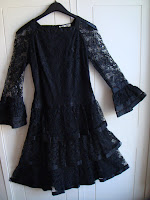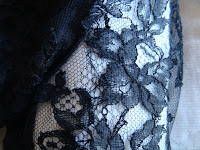
Sitting here in the suburban tundra that is late-January Connecticut has me thinking longingly of spring showers. Trench coat time! Vintage Burberry is as ever the top of the class, but in England, Daks and Aquascutum do wonderful versions, and in the States, London Fog is a reliable standby.
Makers of new-season trenchcoats are forever trying to tweak the formula to bring fashionability to this classic look. Make it short! Make it pink! Make it in crinkly PVC! Whatever. To my mind, this just makes the coat look hopelessly outmoded the following season, and defiles the nature of a utilitarian garment, one meant to be worn for years.

It's so much smarter to get an ungimmicky vintage model. Then, to really make it stylish, make the belt into an ornament. Don't just belt it, for god's sake. Tie it into a pretty bow, as the stylists have done for these ads in American Vogue, for Kiton and Ugg, respectively (I especially love how the Kiton coat is left belted but just open. Worn with monochrome underneath, it's a great way to streamline a full figure).
If you have any trouble tieing a bow, YouTube has countless demo videos to get you started.


































